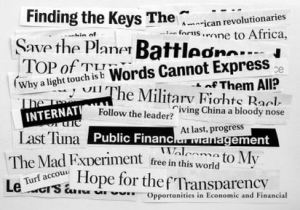COURTESY OF AND REBLOG FROM BRANDBACKER
o matter how great your blog post is, its success is still largely determined by how appealing and effective your headline is. Headlines give readers a vital “first impression” of your content, and striking a balance between the engaging and the professional when writing headlines is no easy task.
To help you start writing more effective headlines, here are five ways to write better headlines on your blog.
1. Try out more than one headline
The first headline you write won’t be perfect. The second one, or even the third, probably won’t be either. Make an effort to write at least five headlines for your post and pick the best one from there. Writing multiple possible headlines will keep your creative juices flowing, and will help you find the best possible headline for your post.
2. Use numbers
Numbers catch people’s attention. When appropriate (usually when writing a list), use numbers in your headline.
For example, look at this post’s headline: “5 Ways to Write Better Headlines.” It’s accurate and informative – the post contains exactly five ways to write better headlines – and the number 5 sticks out at the beginning of the headline. Another possible headline could have been “How to Write Better Headlines.” That headline wouldn’t have been a bad choice, but it doesn’t tell the reader much about what they should expect in the post. The number 5 not only sticks out in the headline but also gives your readers an idea of how the post will be formatted.
3. Make it simple and accurate
Keep it short and simple. An effective headline for each post should be about 68 characters or less, or up to 12 words long, and should let the reader know exactly what information they should expect from the post.
Make sure your headline accurately reflects what your post is about. Look in the first few paragraphs of your post and find the main idea. Your readers should know exactly what the post is about within the first two paragraphs, and your headline should directly reflect that.
4. Use engaging language
While it’s important to be simple and direct, don’t completely sacrifice your creativity. Make use of engaging adverbs and adjectives to catch your reader’s attention. Avoid overused adjectives like “great” and generalized nouns like “things.” Instead, look for more engaging words.
Examples:
- Great → Terrific, wonderful, fantastic, exceptional
- Things → Ways, tips, solutions, facts
This advice extends to writing in general, but it’s especially important to keep this in mind when crafting an effective headline. Try to change up your descriptive language, but be sure not to overdo it.
5. Avoid overly vague, sensationalist headlines
We’ve all seen them. They promise to show us “one weird trick” to solve our problems, they tell us we “won’t believe what happens next.” These headlines drive our curiosity and our clicks, but they aren’t the best choice to maintain your image as a blogger.
This kind of headline, referred to perjoratively as “clickbait,” exploits readers by piquing their curiosity without providing any real information. These headlines usually aren’t accurate or exaggerate the post’s content. Clickbait is effective – clickbait posts do well on social media – but the backlash against clickbait is real, and using clickbait on your blog can lead to your readers distrusting you and your content.
While it might bring you easy clicks, it’s best to avoid clickbait. Instead, be honest with your readers about what your posts are about.
These are just a few ways to improve your headlines and your blog as a whole. Keep checking back for more blog tips to help you become a better blogger.

Awesome Thanks for the tips 😊
LikeLiked by 1 person